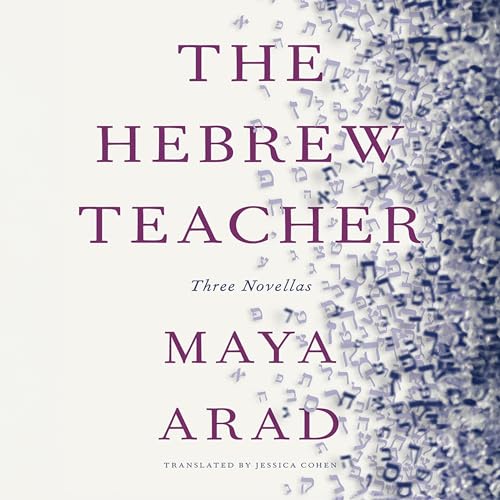Hebrew in Exile
By Steven G. Kellman
“It’s not a good time for Hebrew.” The final words of the title novella in The Hebrew Teacher echo its opening line: “It wasn’t a very good time for Hebrew.” Ilana, an Israeli who has been teaching Hebrew at a midwestern American university for almost forty-five years, faces dwindling enrollments and the fact that the Zionist songs and Jewish customs she has been using to enrich instruction no longer inspire her students. Moreover, the university has hired a hotshot young Israeli professor who has nothing but disdain for Ilana’s cultural cheerleading.

Israel’s founders envisioned the Jewish state as an “ingathering of exiles,” a felicitous conclusion to the long and painful Diaspora. A new diaspora of at least half a million Israelis who have settled in America is a national embarrassment. A resident of California for more than twenty years and a naturalized citizen of the United States, Maya Arad is part of that outgathering of exiles. However, defying the tendency to equate language with location, she continues to write in her native Hebrew. She has published a dozen books in Hebrew, but, perhaps because of Western wariness of the continuing crisis in the Middle East as well as, paradoxically, Arad’s refusal to engage with it directly, this is her debut in English.
When Morah l-‘Ivrit was first published, in 2018, in Hebrew, Israeli prestige and morale were still recovering from the 2014 Gaza War, and it was not a good time for Hebrew. The book’s adroit English translation, by Jessica Cohen, appears now, during the horrific war between the IDF and Hamas, when the times are even less propitious for the language spoken by Arad and her characters. When she first arrived in the United States, in 1971, Israel was still admired as the plucky victor in the Six Day War. But now, as her links to friends back home become more tenuous, Ilana is puzzled and pained by calls to boycott Israel. Resolved to write a memoir in English, so that her American grandchildren will be able to understand her, the embattled Hebrew teacher composes a single sentence: “It wasn’t a very good time for Hebrew.” [p. 83]
The other two novellas – “Visit (Scenes)” and “Make New Friends” – also focus on Israeli women in America. In the first, Miriam, who has not seen her son Yoram in close to three years, departs northern Israel for an uninvited and lengthy visit with him and his family in northern California. She is particularly eager to spend time with her grandson Yonatan, who is off in preschool much of the time and is not especially affectionate toward the Hebrew-speaking stranger. The novel is constructed out of short sections that alternate among points of view – Miriam, Yoram, and Yoram’s young, resentful wife Maya.
In “Make New Friends,” Efrat, Benny, Libby, and Yorat, another Israeli family in northern California, speak among themselves in Hebrew. However, their immigrant status is less important than Arad’s focus on their family dynamics and the way they interact with others in their affluent community. Anxious about her thirteen-year-old daughter’s exclusion from a clique at school, Efat furtively monitors Libby’s cell phone calls and even pretends to be Libby on social media. “Make New Friends” enters the world of teenage social networks, with their shifting slang and their trove of arcane abbreviations (BFF, FUFU, LMAO). Although written in Hebrew, “Make New Friends” is a very American multicultural story, or, rather, a universal examination of mother-daughter tensions and the challenges of growing up and old.
Set in the United States, Arad’s three novellas move from concern with Israeli identity to a near erasure of it. In “The Hebrew Teacher,” Ilana dedicates her life to spreading the language and culture of the world she left behind. In “A Visit (Scenes),” an Israeli mother, Miriam, is estranged from her Americanized son Yoram. By the time we arrive at “Make New Friends,” the Israeli background of Efrat and her daughter Libby is merely incidental to themes of inter-generational tension. It is a very good time for Hebrew when the language can produce a writer with the evocative power of émigrée Maya Arad.
———————————————————————————————————
The Hebrew Teacher by Maya Arad; translated by Jessica; New Vessel Press;2024;$17.95

It seems as good a time as any – and better than most – for Hebrew, of which I learned a little sixty years ago. Perhaps this is a good time to reclaoim some of what I forgot, or at least a good time to read Arad’s stories, with the translation close to hand of course, Thanks for this review.